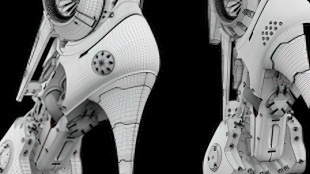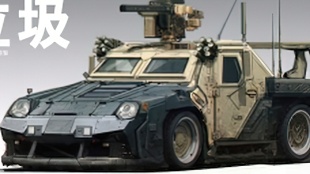您需要 登录 才可以下载或查看,没有账号?注册

x
本帖最后由 秋令6689 于 2022-5-17 12:04 编辑
Mantua Gown – Character Breakdown – Elizabeth Nedashkovskaya 曼托瓦礼服 – 布料分解 – 伊丽莎白·内达什科夫斯卡娅
Creating 1790s Mantua Gown 创造1790年代的曼托瓦礼服
Hello! My name is Liz and I am currently a 3D Artist working in the Games Industry, specializing in scanning. 你好!我的名字是Liz,我目前是一名在游戏行业工作的3D艺术家,专门从事扫描。
As an artist, I have always been inspired by fashion and often found historical dress to be particularly fascinating. For the longest time I wanted to translate this passion into my portfolio, and this project was the first step in creating more digital garments. Another big motivation to create this dress was a wonderful “Cloth creation and simulation for real-time” class by Jayson Fitch at CGMA. 作为一名艺术家,我一直受到时尚的启发,经常发现历史服装特别迷人。在很长一段时间里,我想将这种激情转化为我的投资组合,而这个项目是创造更多数字服装的第一步。创作这件衣服的另一大动机是CGMA的Jayson Fitch的精彩“实时布料创作和模拟”课程。
As all good projects start, this one started with research and gathering references. I am forever grateful to a community of people who appreciate and recreate historical dresses. There is a treasure trove of fascinating and free material which made this project so much easier. However, the patterns that I found were not exactly helpful. Like a lot of clothing at the time, mantua gowns were pinned together. 随着所有优秀项目的开始,这个项目从研究和收集参考资料开始。我永远感谢一群欣赏和再现历史服装的人。 有一个引人入胜的免费材料的宝库,使这个项目变得如此容易。 但是,我发现的模式并不完全有用。就像当时的许多服装一样,曼托瓦礼服被钉在一起。
This means minimal to no sewing. So I had to adjust my own patterns quite a lot in Marvelous designer, not to mention account for details like pleating which are difficult to work within Marvelous. The key to not losing my mind was giving up on some historical accuracy and taking this project a step at a time. 这意味着最少甚至没有缝纫。因此,我不得不在Marvelous Designer中调整自己的模式,更不用说考虑诸如褶皱之类的细节,这些细节在Marvelous中很难工作。不失去理智的关键是放弃一些历史准确性,一步一步地进行这个项目。
After a basic block out was finished, it was challenging to figure out how to create more tricky pieces. One thing that helped was starting to look at this complex and layered garment as origami. But one I will be cutting with scissors, using glue, and cheating in any way possible. For example, the folded back piece that transitions into the train was created by just sewing and adding fabric to create the desired shape. 在完成基本块后,弄清楚如何创建更棘手的作品是具有挑战性的。有一件事有所帮助,那就是开始将这种复杂而分层的服装视为折纸。但是我会用剪刀,用胶水切割,并以任何可能的方式作弊。例如,过渡到火车的折叠后件就是通过缝纫和添加织物来创建所需的形状。
As soon as all the necessary pieces looked good together and were of appropriate size and shape, I removed the sewing and merged them together, creating an appearance of a continuous piece that was just pinned to the waist. The same way of thinking applies to the pleats on the back of the dress. Even though it would be made from a single piece of fabric in real life, assembling those pleats one by one, layer by layer was much easier and gave me more control in the process. 一旦所有必要的部分看起来都很好,并且尺寸和形状合适,我就去掉缝纫并将它们合并在一起,创造出一个连续的单品的外观,只是固定在腰部。同样的思维方式也适用于连衣裙背面的褶皱。尽管在现实生活中,它是由一块布料制成的,但逐层组装这些褶皱要容易得多,并且在此过程中给了我更多的控制权。
Other tools that helped to work on this garment are freeze and solidify options. They helped to ensure the cloth wouldn’t overlap or deform in a way that I didn’t need. Solidify is probably my favorite way to let the piece of cloth stimulate and affect everything around it, but not deform too much, especially if I want to preserve the shapes I already have. 其他有助于制作这件衣服的工具是冷冻和固化选项。他们帮助确保布料不会以我不需要的方式重叠或变形。Solidify可能是我最喜欢的方式,让布料刺激和影响周围的一切,但不要变形太多,特别是如果我想保留我已经拥有的形状。
Here is a little snippet of how my Marvelous Designer pattern ended up looking: 以下是我的Marvelous Designer模式最终看起来如何的小片段:
You can see that I also added a simple petticoat over a modified mesh. This was done to achieve that pannier, wide hip look that was fashionable at the time. 你可以看到我还在修改过的网格上添加了一个简单的衬裙。这样做是为了实现当时流行的更宽阔的臀部外观。
The retopology was started in Marvelous Designer as well. While it isn’t something that I usually do, starting to lay out my geometry there helped me to see how it deforms on the garment, and if enough edge loops were created to accommodate the forms. 重新拓扑学也是在《了不起的设计师》中开始的。虽然这不是我通常做的事情,但开始在那里布置我的几何形状帮助我看到它如何在衣服上变形,以及是否创建了足够的边缘环来适应形状。
The majority of topology cleanup happened in Maya. Having more precise and quick tools really helped me to align, optimize, and confirm the topology even further 大多数拓扑清理都发生在 Maya 中。拥有更精确和快速的工具确实帮助我进一步对齐,优化和确认拓扑结构
Having a clean, workable mesh really helped me with sculpting. One of the biggest challenges during this step was projection. The folded upper skirt was incredibly hard to transfer details from Marvelous to. The way that I ended up doing it, was by separating that piece into polygroups and projecting the details one by one. 拥有一个干净、可操作的网格真的帮助我雕刻。这一步中最大的挑战之一是预测。折叠的上半身裙很难将细节从Marvelous转移到那里。我最终这样做的方式是将该部分分成多边形组,并逐个投影细节。
Overwise I mostly focused on adding wrinkles, removing that “simulated in Marvelous” look, enhancing and adjusting the overall shapes. The most interesting part was creating the small memory folds on the elbow areas and throughout the skirt. While making those folds I really had to think about how the person would move and that type of detective work is what makes it so fun. As I mentioned before the original dress is historically pinned together, so this is another little detail that I wanted to bring through in my sculpting. 总的来说,我主要专注于添加皱纹,去除“在Marvelous中模拟”的外观,增强和调整整体形状。最有趣的部分是在肘部区域和整个裙子上创建小的记忆褶皱。在制作这些褶皱时,我真的必须考虑这个人会如何移动,而这种类型的侦探工作使它变得如此有趣。正如我之前提到的,原来的连衣裙在历史上是固定在一起的,所以这是我想在雕刻中带进来的另一个小细节。
One of the areas I adjusted a lot was the folded skirt and the shoulders. During the simulation, I wasn’t able to achieve the same volume as I saw on the reference, but it gave the dress such an amazing full silhouette that it would be a big disservice not to add it back. 我经常调整的地方之一是折叠的裙子和肩膀。在模拟过程中,我无法达到我在参考上看到的相同体积,但它给了连衣裙如此惊人的完整轮廓,如果不把它加回来,那将是一个很大的伤害。
All the details and adjustments have been sculpted into layers for a less destructive workflow. 所有细节和调整都已雕刻成图层,以减少破坏性的工作流程。
Working in this manner was a tremendous help, even at the end of the process, I found myself coming back to my Zbrush file, adjusting the intensity of the sculpted folds and rebaking my normals. Next up was creating the materials in Substance Designer. But most importantly, I have laid out approximate UVs, which were straightened, optimized and packed well enough to test the material on. 以这种方式工作是一个巨大的帮助,即使在这个过程结束时,我发现自己又回到了我的Zbrush文件,调整了雕刻褶皱的强度并重新烘烤了我的正常状态。 接下来是在 Substance Designer 中创建材质。但最重要的是,我已经布置了近似的UV,这些UV经过拉直,优化和包装,足以测试材料。
Figuring out the exact pattern of cloth on a dress was difficult. Instead, I decided to go an easier route and just create a tileable fabric design from the elements that I saw and try to replicate the overall feel. As a starting point, I recreated a satin weave and then started to build up the elements of the design. Some of them have been copied over from my previous work, like the pomegranates, but the other 90% have been built from scratch. A little swirl greyscale and a mirror can definitely come a long way. Since there are a lot of unique elements, I did my best to reuse the shapes I already created, and continue to reuse them through the base blue cloth and two golden trim sheets. 弄清楚连衣裙上布料的确切图案是很困难的。相反,我决定走一条更简单的路线,只是从我看到的元素中创建一个可平铺的织物设计,并试图复制整体感觉。作为起点,我重新创建了缎面编织,然后开始构建设计的元素。其中一些是从我以前的工作中复制过来的,比如石榴,但其他90%是从头开始建造的。一个小小的漩涡灰度和一面镜子绝对可以走很长的路。由于有很多独特的元素,我尽我所能地重用我已经创建的形状,并通过基础蓝布和两张金色装饰板继续重复使用它们。
The majority of the time was spent laying out and matching the visible elements, trying to figure out the way to make the patterns look cohesive and interesting while tiling. Here having the UVed dress and being able to see how everything looks on a garment and reacting to the light was essential. Checking how my UVs and geometry affect the read of the materials and where I could add a different pattern element and make the whole base fabric material seem less repetitive. I ended up overlapping some bigger pattern pieces, changing the size of them and adding common ingredients of every successful material – warps, noises and imperfections. 大部分时间都花在布局和匹配可见元素上,试图找出使图案在平铺时看起来有凝聚力和有趣的方法。在这里,拥有UVed连衣裙并能够看到衣服上的所有东西的外观并对光线做出反应至关重要。检查我的UV和几何形状如何影响材料的阅读,以及我可以在哪里添加不同的图案元素,使整个基布材料看起来不那么重复。我最终重叠了一些较大的图案,改变了它们的大小,并添加了每种成功材料的常见成分 - 翘曲,噪音和瑕疵。
Here are some process gifs from the creation of substance designer materials: 以下是一些来自物质设计器材质创建的过程 GIF: During the creation of this project there was a lot of back and forth iteration. I have revised the topology, rebaked my normal maps several times and of course adjusted the materials a lot to fine tune the final look. 在创建此项目期间,有很多来回迭代。我修改了拓扑结构,多次重新烘焙了我的法线贴图,当然还对材质进行了大量调整,以微调最终外观。 Rendering setup was nothing super special. My usual approach is to find an HDRI that works well, rotate it so the ambient light highlights the best parts of the model and after that setting up a three point lighting and some colored rim lights. I also enjoy using groups and turntable, for quicker iterations and cleaner file organization. 渲染设置没什么特别的。我通常的方法是找到一个运行良好的HDRI,旋转它,使环境光突出显示模型的最佳部分,然后设置一个三点照明和一些彩色边缘灯。我也喜欢使用组和转盘,以实现更快的迭代和更清晰的文件组织。 This project was a big learning experience for me, excited to apply everything that I figured out to my next artwork. 这个项目对我来说是一次重要的学习经历,很高兴能将我所想到的一切应用到我的下一个艺术作品中。
In the future, I hope to recreate more historical garments and some interesting contemporary outfits as well. Right now I am working on a more modern clothing set which is featuring a dachshund-shaped bag! 将来,我希望能再现更多历史服装和一些有趣的当代服装。现在,我正在制作一种更现代的服装套装,其中包括一个腊肠犬形状的包!
Super excited to show it off in the future. 超级兴奋地在未来炫耀它。
I wanted to say thank you to all the people who helped me out with feedback or advice, my friends and my partner for being there for me! 我想感谢所有帮助我提供反馈或建议的人,我的朋友和我的伴侣,感谢他们为我提供帮助!
And also to you, for reading this article. 也感谢你,阅读这篇文章。
| 








 评分
评分







